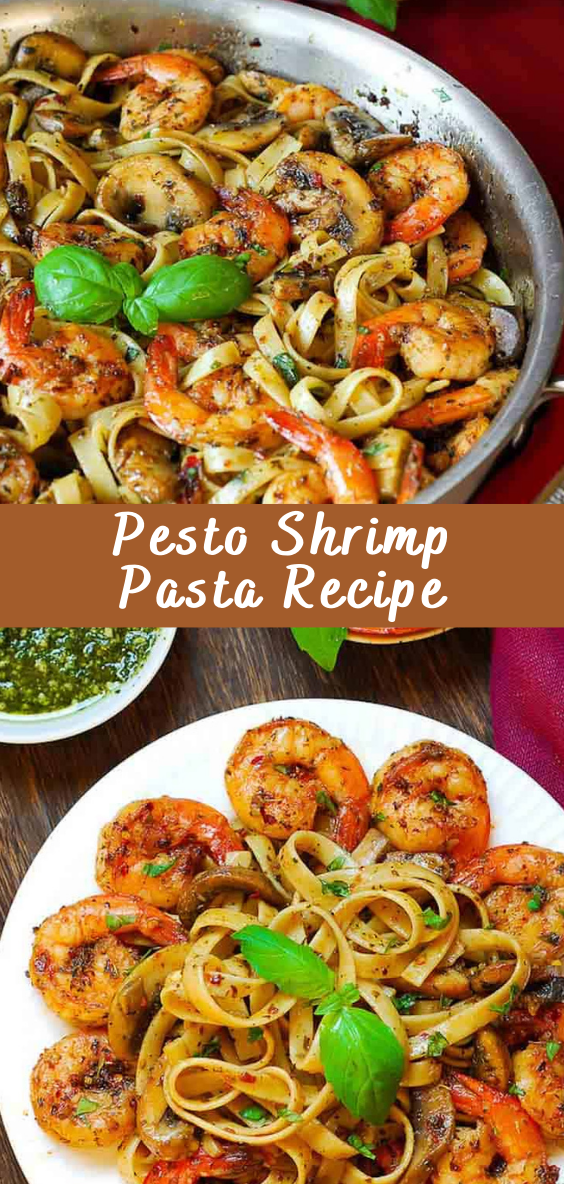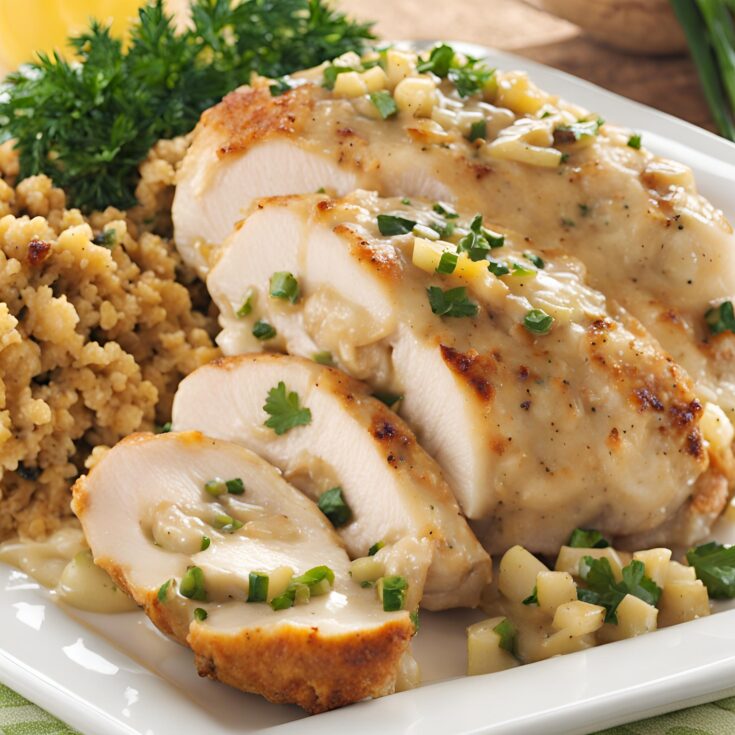Pesto Shrimp Pasta Recipe
Indulge in the tantalizing flavors of Pesto Shrimp Pasta, a delightful dish that combines succulent shrimp with the freshness of basil pesto and the richness of pasta. This recipe offers a perfect blend of savory and aromatic ingredients that will leave your taste buds craving for more. Follow these steps to create a restaurant-quality meal in the comfort of your own kitchen.

Table of Contents
- Introduction
- Ingredients You’ll Need
- Preparing the Shrimp
- Cooking the Pasta
- Making the Basil Pesto
- Combining It All
- Serving Your Pesto Shrimp Pasta
- Tips and Variations
- Nutritional Information
- Frequently Asked Questions (FAQs)
- Conclusion
Introduction
Pesto Shrimp Pasta is a dish that combines the sweetness of shrimp with the vibrant flavors of homemade basil pesto sauce. This recipe not only tastes incredible but is also easy to prepare, making it an excellent choice for weeknight dinners or special occasions.
Ingredients You’ll Need
Before you begin, gather these ingredients:
- 8 ounces of linguine or your preferred pasta
- 1 pound large shrimp (peeled and deveined)
- 2 tablespoons olive oil
- 3 cloves garlic (minced)
- Salt and black pepper to taste
- For the Basil Pesto:
- 2 cups fresh basil leaves (packed)
- 1/2 cup grated Parmesan cheese
- 1/2 cup pine nuts (or walnuts)
- 3 cloves garlic
- 1/2 cup extra-virgin olive oil
- Salt and black pepper to taste
- Juice of 1 lemon
Preparing the Shrimp
- Pat the shrimp dry with paper towels and season them with salt and black pepper.
- Heat 2 tablespoons of olive oil in a large skillet over medium-high heat.
- Add the minced garlic to the skillet and sauté for about 30 seconds until fragrant.
- Add the seasoned shrimp to the skillet and cook for 2-3 minutes per side until they turn pink and opaque. Remove them from the skillet and set aside.
Cooking the Pasta
- Bring a large pot of salted water to a boil. Add the linguine (or your choice of pasta) and cook according to the package instructions until al dente. Drain the pasta and set it aside.
Making the Basil Pesto
- In a food processor, combine the fresh basil leaves, grated Parmesan cheese, pine nuts (or walnuts), garlic cloves, and a pinch of salt and black pepper.
- Pulse the ingredients until they are finely chopped.
- With the food processor running, slowly drizzle in the extra-virgin olive oil until the mixture forms a smooth paste.
- Taste the pesto and adjust the seasoning, if necessary. You can also add the juice of 1 lemon for a refreshing twist.
Combining It All
- In a large mixing bowl, toss the cooked pasta with the homemade basil pesto until the pasta is well coated.
- Gently fold in the cooked shrimp, ensuring they are evenly distributed throughout the pasta.
Serving Your Pesto Shrimp Pasta
Divide the Pesto Shrimp Pasta among serving plates. Garnish with additional grated Parmesan cheese and fresh basil leaves if desired. Serve it hot and enjoy!
Tips and Variations
- Customize your Pesto Shrimp Pasta by adding cherry tomatoes, sun-dried tomatoes, or sautéed spinach for extra flavor and color.
- Substitute the linguine with your favorite pasta shape, such as penne or fettuccine.
- For a creamier variation, add a splash of heavy cream to the pesto sauce.
Nutritional Information
- Note: Nutritional values may vary based on portion size and ingredient brands.
- Calories: 450-500 per serving
- Protein: 25-30g
- Carbohydrates: 35-40g
- Fat: 25-30g
- Fiber: 3-4g
Frequently Asked Questions (FAQs)
1. Can I use frozen shrimp for this recipe?
- Yes, you can use frozen shrimp, but be sure to thaw and drain them thoroughly before cooking.
2. How can I store leftover Pesto Shrimp Pasta?
- Store any leftovers in an airtight container in the refrigerator for up to 2-3 days. Reheat gently on the stovetop or in the microwave.
3. Can I make the basil pesto in advance?
- Absolutely! Homemade basil pesto can be stored in the refrigerator for up to a week, or you can freeze it for several months.
4. Can I use store-bought pesto sauce?
- While homemade pesto offers the freshest flavor, you can use store-bought pesto for convenience. Just be sure to adjust the quantity according to your taste.
Conclusion
Pesto Shrimp Pasta is a delightful combination of succulent shrimp, aromatic basil pesto, and perfectly cooked pasta. Whether you’re cooking for a special occasion or craving a flavorful weeknight dinner, this dish will not disappoint. Enjoy the harmony of flavors and savor each bite of this homemade culinary masterpiece!
Source: whatsinthepan.com
Delicious Stuffed Chicken Breast Recipe

Stuffed chicken breast is a delicious and versatile dish that is perfect for any occasion. With its rich filling and juicy chicken, this recipe is sure to become a family favorite. Give it a try and enjoy a gourmet meal that is easy to make and incredibly satisfying.
Ingredients
- Chicken breasts: Boneless, skinless chicken breasts serve as the foundation for any stuffed chicken recipe. They provide a moist and flavorful base for your stuffing.
- Filling ingredients: The filling for stuffed chicken can be as creative as your taste buds desire. From savory and tangy fillings like corned beef and sauerkraut for a Reuben-stuffed chicken to a spinach-stuffed variation with cream cheese and sun-dried tomatoes, the options are endless. Cheeses, vegetables, meats, and herbs can all be used to create unique flavor combinations.
- Seasonings: Various herbs and spices are used to enhance the flavors of the stuffing mixture and chicken. Popular choices include garlic, thyme, rosemary, and paprika.
- However, one of the best things about stuffed chicken recipes is their flexibility. You can easily substitute ingredients based on personal preferences or dietary needs. Here are some possible substitutions to consider:
- Cheese: If you’re lactose intolerant or following a dairy-free diet, you can swap out regular cheese for a dairy-free alternative like vegan cheese or nutritional yeast.
- Meat: For a lighter version, you can replace heavier meats like corned beef with leaner options like turkey or chicken sausage.
- Vegetables: Feel free to experiment with different vegetables based on seasonal availability or personal preference. For example, you can substitute spinach with kale or swap out sun-dried tomatoes for roasted red peppers
Instructions
Making stuffed chicken involves a few simple steps:
- Prepare the chicken breasts: Start by pounding the chicken breasts to an even thickness, making them easier to stuff and ensuring they cook evenly.
- Create a pocket: Use a sharp knife to carefully cut a slit in each chicken breast, creating a pocket for the stuffing.
- Make the stuffing mixture: In a separate bowl, combine the ingredients for the filling, such as cooked vegetables, cheese, and seasonings.
- Stuff the chicken: Spoon the filling mixture into the pockets of the chicken breasts, ensuring they are evenly filled but not overflowing.
- Secure the chicken: Use toothpicks or kitchen twine to secure the openings of the chicken breasts, keeping the stuffing inside during cooking.
- Cook the stuffed chicken: Depending on the recipe, you can either bake, pan-fry, or grill the stuffed chicken until it reaches the appropriate internal temperature and is cooked through.
- Rest and serve: Allow the chicken to rest for a few minutes before slicing and serving. This will help retain the juices and flavors.